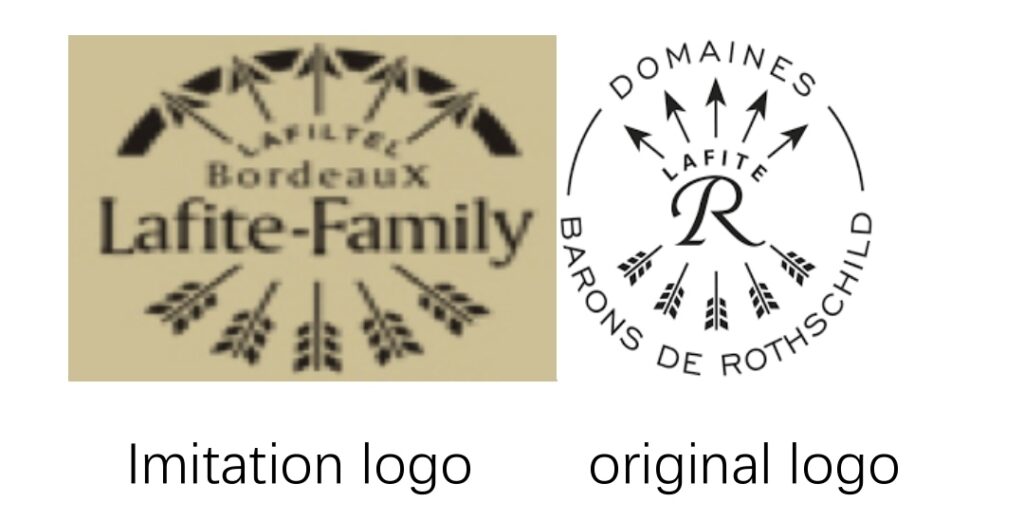Shenzhen Jinhongde Trading Co., Ltd. (hereinafter “defendant”) was found having used “LAFITE FAMILY”, the imitation logo and “拉菲世族” (Chinese translation of “LAFITE FAMILY”)on various occasions without any authorization at all. In September 2010, CHATEAU LAFITE ROTHSCHILD (hereinafter “plaintiff”) filed a lawsuit with the Changsha Intermediate Court (the court of first instance) on the grounds that the defendant violated the plaintiff’s exclusive trademark rights and engaged in unfair competition.

Eventually, the final judgement was made by the Hunan High Court (appellate court) on 17 October 2011, finding that the defendant’s use of “LAFITE FAMILY”, imitation logo and the use of the domain name “LAFITEfamily.com” which contained the text of the trademark “LAFITE” on its website constituted trademark infringement. Furthermore, the defendant’s misleading promotion of its brand name “拉菲世族” on the website and other marketing material constituted unfair competition.
This lawsuit is the first intellectual property case filed by the plaintiff in China. The trial and the final outcome of this case had attracted a lot of attention given the fact that it involved a series of legal issues, such as whether the brand name “拉菲” is protectable and how it could be protected. The opinion from both courts at two levels confirming that after long-term use and extensive publicity, the unregistered brand name “拉菲” of the plaintiff has constituted the specific name of a well-known product is the highlight of the case.
From this perspective, we are sharing here our analyzes of this case:
I. “拉菲” has actually be used to refer to the plaintiff’s wine.
The use of “拉菲” in the media and its widespread dissemination have led consumers to associate “拉菲” with the plaintiff’s wine. However, whether this “association” can be converted into an actionable right depends on whether the right owner confirms this kind of “association” or not. As a matter of fact, some foreign brands are opposed to using certain Chinese names to refer to their brands or products in the media, and therefore have never actually used them. In that case, the “association” arising from the media coverage would not constitute a legitimate right.
For example, Pfizer from the U.S. uses the trademark “万艾可” (Chinese trademark of VIAGRA)on a medicine they made specifically for men with erectile dysfunction, however nearly Chinese media has been using “伟哥” referring to ” VIAGRA ” since 1998. In response, Pfizer issued a “lawyer’s statement”, specifically affirmed that the corresponding Chinese name of “Viagra” is “万艾可” instead of “伟哥”. In practice, Pfizer has never used “伟哥” on VIAGRA in China. Therefore, 伟哥 cannot be recognized as the specific name of a well-known product under Article 5 (2) of the <Anti-Unfair Competition Law>.
However, this case is totally different from the above-mentioned example. The extensive usage of “拉菲” in referring to wine provided by the plaintiff in the media, plus the fact that the plaintiff’s usage of “拉菲” in commercial occasions, makes it a reasonable decision to assume “拉菲” as the specific name of a well-known product of the plaintiff.
II. Criteria for the protection of specific name of a well-known product
However, it should be noted that after all, the plaintiff didn’t register “拉菲”as a trademark of its wine in China. So, the legal base for the plaintiff to demand protection is the provision regarding the specific name of a well-known product under the <Anti-Unfair Competition Law> and the relevant judicial interpretation, rather than the <Trademark Law>. The key point to judge is if there exists any infringement of the “specific name of a well-known product” and to consider whether the alleged infringer did it on purpose, or with maliciousness, while the intention of the alleged infringer is something does not need to be considered in any trademark infringement case. Obviously, compared to the exclusive rights provided in the <Trademark Law>, there are more restrictions to demand protection over the specific name of a well-known product, and once again, that’s why we repeatedly tell all overseas companies to apply for their trademarks in Chinese once they are intended to offer goods or services in China. (You may visit our previous posts: Two Ways of Trademark Registration in China.
Now let’s get back to this case. It’s obvious that none of the behaviors of the defendant do not amount to an imitation of the plaintiff’s product. For example, the use of the text “LAFITE FAMILY”, the use of the five-arrow graphics in its imitation logo, the use of “拉菲世族” and the make-up story of the “拉菲世族” based on the plaintiff’s background information. The above-mentioned behaviors may be attributed respectively to the infringement of the right to exclusive use of registered trademarks, infringement of a specific name of a well-known product, false publicity, but all these behaviors are not isolated from each other, on the contrary, they constitute a systematical infringement. Thus, taking into account the fact that the defendant violated the principle of good faith with obvious maliciousness, it’s absolutely correct to assume that the defendant’s behaviors constitute unfair competition and should be dealt with accordingly.
Useful link:
The Supreme People’s Court of The People’s Republic of China

